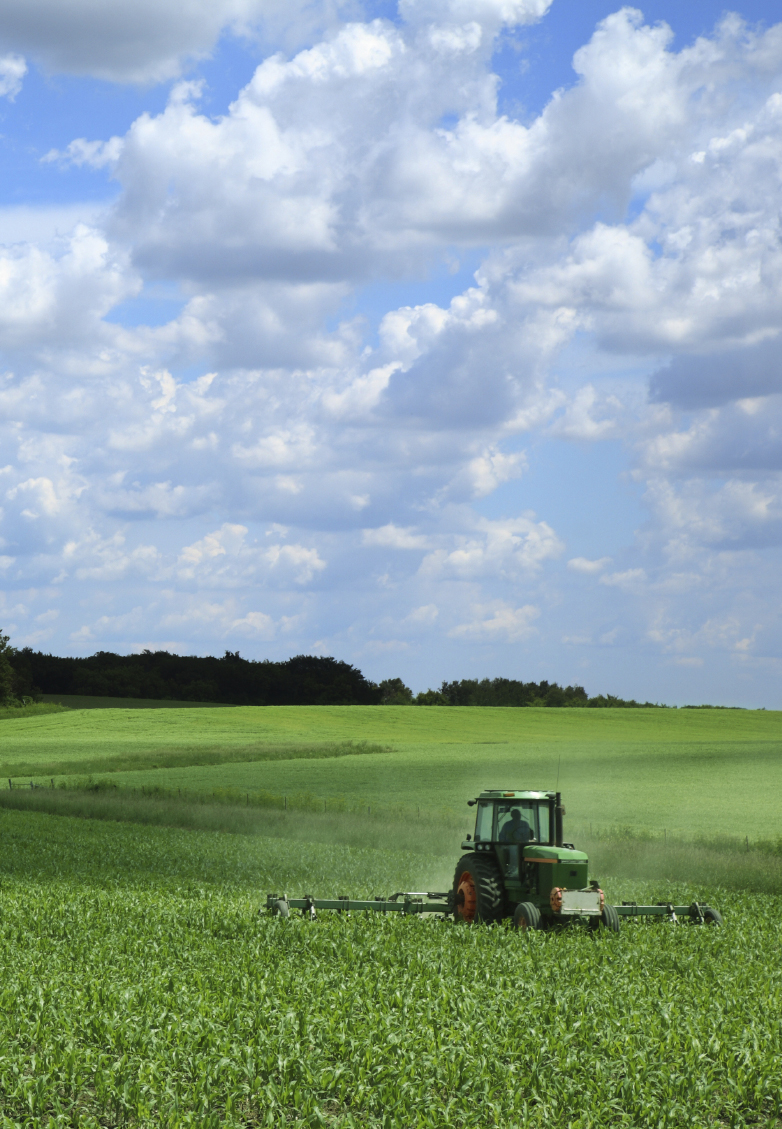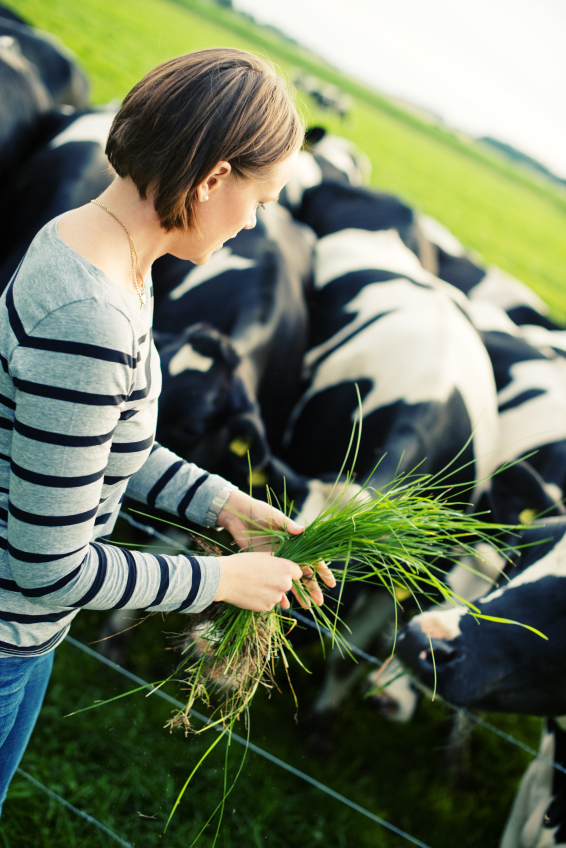
“I keep hearing about antibiotics and hormones in milk. Our family goes through at least two gallons a week—should I be worried?”
All milk contains minute amounts of naturally occurring hormones known as Bovine somatotropin (bST). bST is a protein hormone that helps young cattle grow and adult cows produce milk. A small amount of bST occurs in all milk—including organic milk products—and is completely broken down in the digestion process like any other protein.
And no, there are no antibiotics in milk. All milk, both regular and organic, is tested for antibiotics. Any tanker that tests positive is disposed of immediately.
The Food and Drug Administration (FDA) can only approve animal drugs that are safe and effective. In fact, the safety assessment of a drug for a food animal in the U.S. is more stringent than the drug approval process for humans. This helps ensure that American consumers are eating the safest meat in the world while maintaining the health and comfort of the animal.
The presence of antibiotic residue in meat is illegal as well. Livestock farmers understand that violating this law—and the public trust—could mean a quick end to their livelihood.
According to Dr. Scott Hurd, former deputy undersecretary for food safety at the USDA, the scientific risk assessments on antibiotic use in livestock show that the human health risk from resistant bacteria ranges from extremely low to nonexistent. There’s no need for moms to worry that livestock antibiotics are creating “superbugs.” Studies show that the misuse of antibiotics by humans is the primary contributor to this problem.
Additional details can be found here.
“Why does organic food cost more?”
One reason is that organic farming is more labor-intensive. Because pesticides and herbicides cannot be used to control weeds and pests in organic farming, other methods must be used to help manage these issues. This can also mean lower production yields. As a result, an organic farmer will have to charge more to help cover those costs.
The National Center for Food and Policy illustrated this point in a 2003 study that set out to determine how much extra labor would be required to maintain then-current crop yields without the use of herbicides. The answer: An additional 70 million farmhands—25% of the US population—would be pulling weeds for one month out of every year.
Again, it’s important for individuals to allow all choices, including organic. It’s equally important to understand that forcing one method of farming over another might mean eliminating someone else’s only affordable food choice.
“Is it safe to assume that smaller farms are going to be more conscientious about nutrition and food safety?”
Such an assumption seems to be popular these days, but it has no basis in fact. There are many different farming methods and a variety of sizes for each one—but no one has a monopoly on nutrition and safety.
While there are still farms that have a handful of pigs or cattle on their farm, that is more an indication of a niche market or a second income to support it. Niche market or specialty farmers are meeting a consumer demand by charging a higher price for their products than some Americans can consistently afford. More expensive doesn't necessarily mean better; it just means different. It's a choice that American farmers are happy to provide.
Some types of smaller farms aren't subject to the same number of rigorous regulations of today's modern, larger farms, which today have to follow upwards of 180 pages of regulations in order to put their food product on your table. These responsible, modern farms are successful not because of size, but because of experienced, watchful, compassionate care of the land and the animals. Success and safety are not size-dependant.
Also, don't confuse labels like 'Organic,' 'cage free' or 'free range' on food as from a 'small' farm or even certified or regulated. In fact, a Missouri 'organic' cattle farmer is being investigated by the USDA for their practices on a 22,000-head organic cattle farm.
It's important to understand what's really behind a food label and whether such words are used as a marketing tool, or a well-earned guarantee, based on regulated, certified methods of food production.
“What about us moms who are concerned about the environment? Should we be choosing alternative foods?”
We applaud anyone whose actions show concern for the planet. But it’s important not to jump to conclusions that one method of farming is better than another. All farming methods serve a purpose and continuous improvements to all of them help make them more environmentally friendly.
For example, no-till farming prevents soil erosion, keeps enough carbon in the soil to offset emissions, and helps maintain the sustainability of the land. Modern farming methods have also doubled crop yields from methods used in the 1960s on roughly the same amount of land—all while helping feed a growing population.
Critics of modern farming are opposed to the use of pesticides to control weeds and insects. But new advances in seed technology mean that fewer pesticides are used each year. In addition, regulations are in place to ensure the safety of our food supply.
Organic systems also have their place in the food system, offering greater water retention in the soil, as well as a higher presence of beneficial insects. These systems would also require using much more land in order to feed a growing population, which just isn’t feasible.
So you can see why both options are viable and why both need to coexist.
“I hear a lot about the local-food movement. Is that better for my family?”
Buying local makes sense for some people. And it’d be hard to find fault with supporting local farmers.
Is it possible to buy all your food locally? Well, if you live in a moderate climate that accommodates a year-round growing cycle, it’s possible. But let’s face it: You’re not going to find fresh fruits and vegetables in Iowa in January.
Supply is also a consideration. If all the moms in your city showed up at the weekly farmers’ market with the intention of buying everything they need to feed their families, the stands would be sold out in minutes. The demand would far outweigh the supply.
You’d have some happy local farmers, but some very unhappy moms.
And that’s exactly why modern farming techniques exist today. With the world population at six billion and growing, it’s impossible for everyone to meet his or her food needs with a garden, or with surplus from local farms. Today’s farmer feeds about 155 people (up from 26 in 1960), but he’s not doing it out of the back of his truck.
Today’s farmer feeds about 155 people (up from 26 in 1960).

There’s no need for moms to worry that livestock antibiotics are creating “superbugs.”

“FarmPolicyFacts.org reports that feeding ten people a typical Thanksgiving dinner using only organic foods would cost a little over $102. The same meal with foods from traditional farming: $50.”
“Americans have become accustomed to spending only 10% of their disposable income on food compared to what we spent in the 1930s, when 25% of American income was needed to pay the grocery bill.”
–Trent Loos, sixth-generation American farmer




 choose 2 know your food
choose 2 know your food

